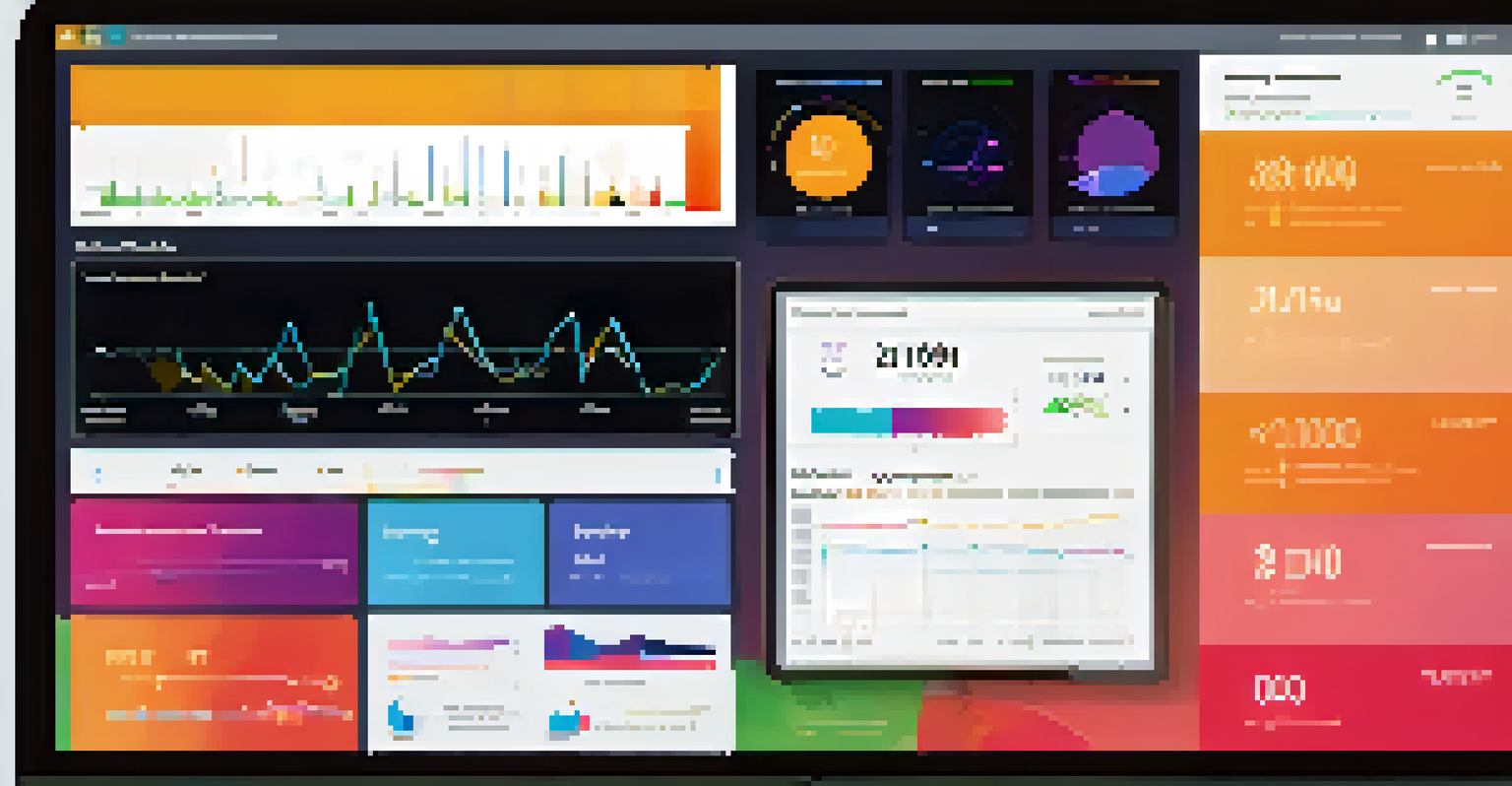The Role of Automation in Augmented Analytics Solutions

Understanding Augmented Analytics and Its Importance
Augmented analytics is a game-changer in the world of data analysis. It leverages machine learning and artificial intelligence to automate data preparation, insight generation, and reporting. This reduces the reliance on data scientists and empowers business users to make data-driven decisions more efficiently.
Without data, you're just another person with an opinion.
In today's fast-paced business environment, organizations are inundated with vast amounts of data. Augmented analytics helps sift through this data, uncovering valuable insights that might otherwise go unnoticed. By automating complex processes, it not only saves time but also enhances the accuracy of the insights derived.
Ultimately, the goal of augmented analytics is to democratize data, making it accessible to all levels of an organization. This shift can lead to a culture of data-driven decision-making, where employees feel empowered to leverage data in their everyday tasks.
The Role of Automation in Data Preparation
Data preparation is often cited as one of the most time-consuming aspects of data analysis. Automation streamlines this process by using algorithms to clean, transform, and integrate data from various sources. This means that analysts can spend less time wrangling data and more time focusing on deriving insights.

For instance, imagine a marketing team that needs to analyze customer feedback from multiple platforms. With automated data preparation tools, this team can quickly gather and organize feedback, allowing them to identify trends and sentiments without the usual manual effort.
Augmented Analytics Empowers Users
By automating data preparation and insight generation, augmented analytics democratizes data access for all employees.
By speeding up data preparation, automation not only improves efficiency but also enhances the overall quality of the analysis. Clean and well-structured data leads to more reliable insights, which is crucial for making informed business decisions.
Enhancing Insight Generation Through Automation
Once data is prepared, the next step is generating insights, and this is where automation truly shines. Automated analytics tools can quickly analyze data, identify patterns, and even suggest actionable steps. This significantly reduces the time it takes to generate reports that inform strategy.
In God we trust, all others bring data.
Consider a sales team that regularly reviews performance metrics. With automated insight generation, the team can receive real-time updates and alerts about key performance indicators, enabling them to adjust their strategies on the fly. This agility can be a game-changer in competitive markets.
Moreover, automated insights can uncover hidden relationships within the data that might not be immediately obvious. This deeper understanding can lead to innovative strategies and a more proactive approach to market changes.
Automating Reporting for Real-Time Decision Making
Reporting is another area where automation plays a critical role. Traditional reporting processes can be labor-intensive and slow, often leading to outdated information being used for crucial business decisions. Automated reporting tools can generate up-to-date reports with just a few clicks.
This real-time capability allows organizations to react quickly to emerging trends or shifts in market conditions. For example, a retail company can instantly see sales performance across different locations and make inventory adjustments as needed.
Automation Enhances Data Efficiency
Automated processes streamline data preparation and reporting, allowing analysts to focus on deriving actionable insights.
Furthermore, automated reports can be customized to highlight the most relevant metrics for different stakeholders, ensuring that everyone has access to the information they need, when they need it.
The Impact of Machine Learning on Analytics Automation
Machine learning (ML) is at the heart of many automation processes in augmented analytics. It enables systems to learn from previous data patterns and improve their predictions over time. This means that the more data these systems process, the better they become at generating insights.
For instance, an e-commerce platform can use ML algorithms to predict customer purchasing behavior based on historical data. This predictive capability can inform marketing strategies and inventory management, ultimately driving sales and enhancing customer satisfaction.
As ML continues to evolve, its integration into augmented analytics will only deepen, paving the way for even more sophisticated automation techniques in data analysis.
Challenges of Implementing Automation in Analytics
Despite its advantages, implementing automation in augmented analytics is not without challenges. Organizations may face resistance to change from employees who are accustomed to traditional methods. Additionally, there may be concerns about the reliability of automated insights versus human analysis.
To overcome these hurdles, it's essential for organizations to provide training and support to help employees adapt to new tools. This can foster a culture of collaboration between human analysts and automated systems, enhancing the overall analytical capabilities of the organization.
Machine Learning Drives Insight Accuracy
Machine learning improves the predictive capabilities of analytics tools, leading to better-informed business strategies.
Moreover, it's crucial to establish clear guidelines for when to rely on automation and when to apply human judgment. Balancing the strengths of both approaches can lead to more robust and trustworthy analytics outcomes.
The Future of Automation in Augmented Analytics
Looking ahead, the future of automation in augmented analytics appears bright. As technology advances, we can expect to see even more sophisticated tools that integrate seamlessly with existing workflows. This will further enhance the ability of organizations to leverage data effectively.
For example, advancements in natural language processing (NLP) could allow users to interact with data using conversational queries. This means that even those without a technical background can extract insights simply by asking questions in everyday language.

As organizations increasingly recognize the value of data-driven decision-making, the demand for automation in augmented analytics will continue to grow. Embracing this trend will be key for businesses aiming to stay competitive in an ever-evolving landscape.